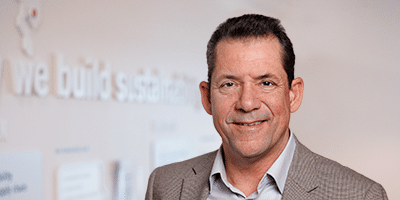
Explore with:
HOWARD GOFF
Transcript
The change curve in the level up course is a checklist to understand a change progress – from the negative ‘Why?’ and ‘What-about-ME?’, over the more neutral ‘How?’-phase, to the enthusiastic ‘If.. then!’-phase. It also explains what can happen when change is initiated from the top. Let’s look at an example from another company:
The CEO had a great idea and told it to the management team. The managers said: “Why?” and “What about me?” and saw no benefits. The very patient CEO explained and talked and motivated and nudged until the management team saw possibilities and got enthusiastic – the “If-then!” phase. This took about six months, so now they were in a hurry to implement. Time to tell the employees.
But first the middle managers should be informed – that’s only fair. So, the management team met with middle managers in the morning, and with employees in the afternoon. The middle managers said: “Why?” and “What about me?” and saw no benefits. The management team were surprised at this ‘resistance to change’, because they had forgotten that their own reaction was exactly the same at first and that it took them six months to get over it.
Of course, with the employees waiting, there wasn’t much time to let middle managers process the change, which made the curve steeper. And when employees received the information, they thought “Why?” and “What about me?”, but they didn’t say it to the management team, they waited until they got back to their office and asked their manager – one of those middle managers who just learned about the change and was still in the “Why?” phase.
This put the middle managers in a terrible position. Either they could be loyal to the company and fake enthusiasm in front of their staff, or they could be disloyal and honest and say: “I don’t understand this either, but orders are orders”. Either way, they risked making employees more suspicious of the change. Which made the curve steeper.
Even if everyone is trying to do a good job, a process like this will make change slower and more difficult than it has to be. The management team must now handle both the change, and the resistance to change. But all that is needed for a smoother change is to involve people early and give them influence.
An early dialogue gives employees a chance to see the intentions behind the change, to warn about risks, and to discuss options and priorities. When they know what’s going on, they can level up and make implementation smoother. This process takes some time in the beginning but can dramatically shorten the time it takes to get the change done.
All the things described in the level up course – initiatives, learning mindset, exploring, cooperation, all of them – will make changes easier to implement. If you involve people early.
There will always be unexpected problems and opportunities in a change process, but if people are used to exploring, they will try to deal with them as they occur, instead of everything unplanned being sent to managers while everyone else is waiting.
So, by encouraging people to level up, you prepare them to handle change effectively. Exploring leadership.
